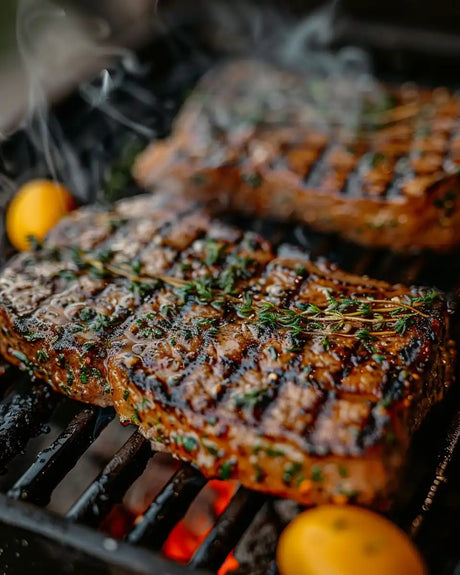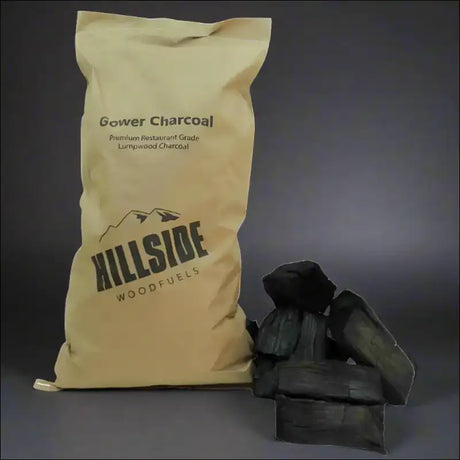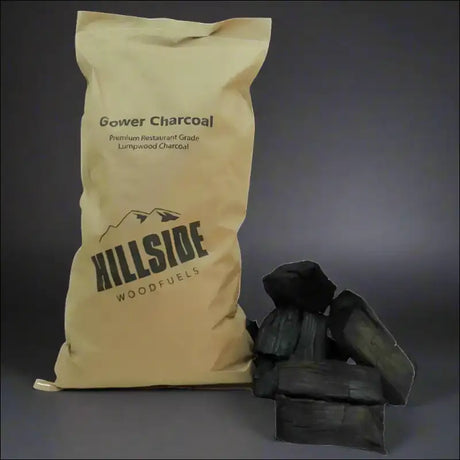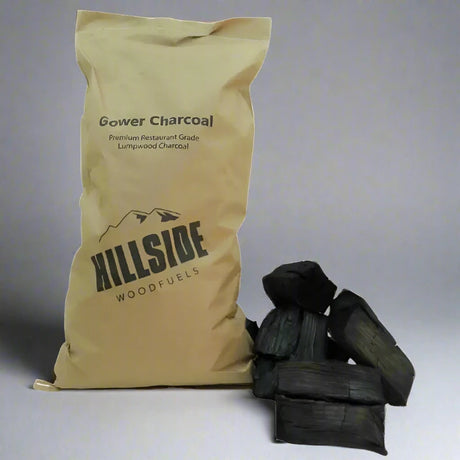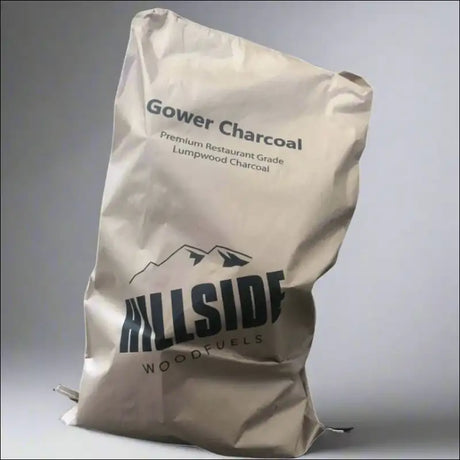Ever wondered why grill lovers have such a tough choice? It's between the Big Green Egg and gas grills. Both have their fans and the debate on which is better never ends in the barbecue world. So Why do some prefer the ceramic Big Green Egg and others the convenience of gas grills?
Embarking on the Grilling Adventure: Big Green Egg vs. Gas Grill
Lets say you're in your backyard, surrounded by friends and family, ready to grill up a storm... Nice summer day, the sun is shining, not a single rain cloud in sight, the drinks are flowing... Which grill would you want to power up? Which grill fits with you and your style? Will it be the timeless, versatile Big Green Egg or another ceramic kamado style grill or the convenient, quick-heating gas grill?
Let's dive into the world of the Big Green Egg first. This ceramic marvel, with its roots in ancient Chinese and Japanese cooking traditions, is more than just a grill—it's a way of life. Its design allows for stable temperatures over extended cooking times, making it the perfect companion for low-and-slow cooking enthusiasts. Whether you're in the mood for succulent pulled pork, crispy pizza, or even a delicate soufflé, the Big Green Egg has got you covered. And let's not forget the unparalleled flavor it imparts to your food, thanks to its ceramic construction. With a wide array of accessories available, the possibilities are endless, and you'll soon find yourself part of a passionate community of Big Green Egg aficionados.
On the other hand, gas grills are the go-to choice for those who prioritize convenience and efficiency. Picture the scene: you've just gotten home from a long day at work, and your stomach is growling. With a gas grill, you can have the flames licking your burger patties within minutes. Adjusting the heat is as simple as turning a knob, giving you complete control over your culinary creations. And just like the Big Green Egg, gas grills come with a plethora of accessories to help you explore various cooking styles. Whether you're grilling up a quick weeknight dinner or hosting an impromptu backyard bash, a gas grill is your faithful ally.
So, which grill will you choose? The Big Green Egg, with its versatility, flavor, and vibrant community? Or the gas grill, with its convenience, speed, and adaptability? Whichever path you follow, one thing is certain: there will be a bbq!
Comparing Cooking Styles: Kamado, Charcoal, and Gas Grills
When it comes to outdoor cooking, choosing the right grill can make all the difference in your culinary adventures. Let's take a closer look at three popular options: kamado grills, charcoal grills, and gas grills. We'll compare their cooking styles, versatility, and other factors to help you decide which one best suits your needs.
Cooking Techniques and Versatility
| Grill Type | Techniques | Versatility |
|---|---|---|
| Kamado | Grilling, smoking, baking, roasting | High |
| Charcoal | Grilling, smoking | Medium |
| Gas | Grilling, rotisserie, indirect cooking | Medium |
Kamado grills, like the Big Green Egg, offer the widest range of cooking techniques. Their thick ceramic walls provide excellent insulation, allowing you to grill, smoke, bake, and roast with ease. Charcoal grills are great for grilling and smoking, but they may not be as versatile as kamados. Gas grills, on the other hand, excel at grilling and offer the convenience of features like rotisserie and indirect cooking.
Cooking Times and Temperature Control
When it comes to cooking times and temperature control, each grill has its strengths:
- Kamado grills: Once you get the hang of it, kamados offer precise temperature control and maintain stable temperatures for long cooks. However, they can take a bit longer to heat up initially.
- Charcoal grills: These grills provide good temperature control, but you'll need to keep a closer eye on them compared to kamados. Cooking times are generally similar to kamados.
- Gas grills: The main advantage of gas grills is their quick heating time. Temperature control is easy with the turn of a knob, but they may not provide the same level of precision as kamados or charcoal grills.
Flavor Profile

One of the most significant factors in choosing a grill is the flavor it imparts to your food. Here's how they compare:
- Kamado grills: The ceramic construction and lump charcoal used in kamados provide a rich, smoky flavor that many people love.
- Charcoal grills: Like kamados, charcoal grills offer a distinct, smoky taste that's hard to replicate with gas.
- Gas grills: While gas grills are convenient, they don't provide the same smoky flavor as charcoal or kamado grills. However, you can still achieve great results with the right techniques and accessories, like smoker boxes.
Forgiveness and Ease of Use
We all make mistakes when grilling, but some grills are more forgiving than others:
- Kamado grills: Once you've mastered the learning curve, kamados are pretty forgiving. Their excellent insulation helps maintain consistent temperatures, even if you make a small mistake.
- Charcoal grills: These grills are a bit less forgiving than kamados, as temperature fluctuations can occur more easily. However, with practice, you'll learn to control the heat effectively.
- Gas grills: Gas grills are the most forgiving and easiest to use. If you make a mistake, simply adjust the burners, and you'll be back on track in no time.
Temperature Control and Heat Retention
One of the most crucial aspects of successful grilling is maintaining proper temperature control and heat retention. Let's explore how kamado, charcoal, and gas grills perform in this regard.
Kamado Grills
Kamado grills, like the Big Green Egg, are known for their excellent temperature control and heat retention. The thick ceramic walls provide superior insulation, allowing the grill to maintain stable temperatures for extended periods. This makes kamados ideal for low-and-slow cooking, as well as high-heat searing.
Advantages:
- Precise temperature control
- Excellent heat retention
- Efficient use of charcoal
Disadvantages:
- Longer initial heat-up time
- Learning curve for temperature adjustment
Charcoal Grills
Charcoal grills offer good temperature control, but they require a bit more attention and effort compared to kamado grills. The key to success is managing the airflow through the vents and adjusting the charcoal arrangement.
Advantages:
- Good temperature control with practice
- Affordable and widely available
Disadvantages:
- Requires more monitoring and adjustments
- Less efficient use of charcoal compared to kamados
Gas Grills
Gas grills are known for their convenience and ease of temperature control. Adjusting the heat is as simple as turning a knob, making it easy to create different heat zones for various cooking techniques.
Advantages:
- Quick and easy temperature adjustment
- Consistent heat output
- Multiple burners for creating heat zones
Disadvantages:
- Less heat retention compared to kamados and charcoal grills
- Potential for flare-ups due to dripping grease
When it comes to temperature control and heat retention, kamado grills reign supreme. Their thick ceramic walls provide unmatched insulation, allowing for precise temperature control and long, stable cooking times. Charcoal grills offer good temperature control but require more attention and adjustments. Gas grills prioritize ease of use and quick temperature adjustment but may lack the heat retention of kamados and charcoal grills.
Mastering temperature control on your chosen grill takes practice and patience. Experiment with different techniques, such as the snake method for charcoal grills or the use of heat deflectors in kamados, to achieve the desired results. With time, you'll become a pro at maintaining the perfect temperature for any grilling task, whether it's low-and-slow smoking or high-heat searing.
The Grilling Experience
Finally, let's talk about the overall experience of using each type of grill:
- Kamado grills: Cooking with a kamado is an immersive experience that many people find enjoyable and rewarding. The community around kamado grilling is passionate and supportive, making it a fun hobby to dive into.
- Charcoal grills: Charcoal grilling is a classic experience that many people grew up with. It's a hands-on process that requires a bit more attention than gas grilling, but the results are worth it.
- Gas grills: Gas grilling is all about convenience and ease of use. It's perfect for quick, weeknight dinners or when you don't want to fuss with charcoal or spend too much time tending to the grill.
Grill Maintenance, Operation, and Safety
When considering a grill, it's essential to understand the maintenance, operation, and safety aspects of each type. Let's explore how kamado, charcoal, and gas grills compare in these areas.
Maintaining Your Grill
- Kamado grills: These grills require minimal maintenance. The ceramic interior is easy to clean, and the ash can be quickly removed after each use. However, it's crucial to avoid using abrasive cleaners or tools that may damage the ceramic.
- Charcoal grills: Charcoal grills need more frequent cleaning than kamados, as ash and debris can accumulate quickly. Regularly remove ash and clean the grates to maintain optimal performance.
- Gas grills: Gas grills require regular cleaning of the grates, burners, and grease trays. Periodically check the gas connections and hoses for leaks or damage.
Operating Your Grill
- Kamado grills: Operating a kamado grill involves controlling the airflow through the top and bottom vents. It may take some practice to master the temperature control, but once you get the hang of it, kamados are relatively easy to use.
- Charcoal grills: Charcoal grills require the management of airflow through the vents and the arrangement of the charcoal. Lighting the charcoal and waiting for it to reach the desired temperature takes some time and effort.
- Gas grills: Gas grills are the easiest to operate, with simple controls for ignition and temperature adjustment. However, you'll need to ensure a steady supply of propane or natural gas.
Charcoal Quality and Quantity
- Kamado grills: Kamados work best with high-quality lump charcoal, which burns hotter and produces less ash than briquettes. The amount of charcoal needed depends on the size of your grill and the length of your cooking session.
- Charcoal grills: You can use either lump charcoal or briquettes in a charcoal grill. The quantity of charcoal required depends on the size of your grill and the desired cooking temperature.
Gas Cost
The cost of operating a gas grill depends on the price of propane or natural gas in your area. While propane tanks need to be refilled or exchanged periodically, natural gas grills are connected to your home's gas line, providing a constant supply.
General Safety
- Kamado grills: Always use heat-resistant gloves when handling a kamado grill, as the ceramic can get very hot. Be cautious when opening the lid, as the sudden influx of oxygen can cause a flash of heat.
- Charcoal grills: Use caution when lighting the charcoal and handling the hot grates. Ensure the grill is placed on a stable, non-flammable surface away from structures and flammable objects.
- Gas grills: Regularly check for gas leaks and ensure proper ventilation when using a gas grill. Keep the grill away from flammable objects and never use it indoors.
Regardless of the type of grill you choose, always prioritize safety. Keep children and pets away from the grilling area, and have a fire extinguisher nearby in case of emergencies. By following proper maintenance, operation, and safety guidelines, you'll enjoy a smooth and enjoyable grilling experience with your chosen grill.


